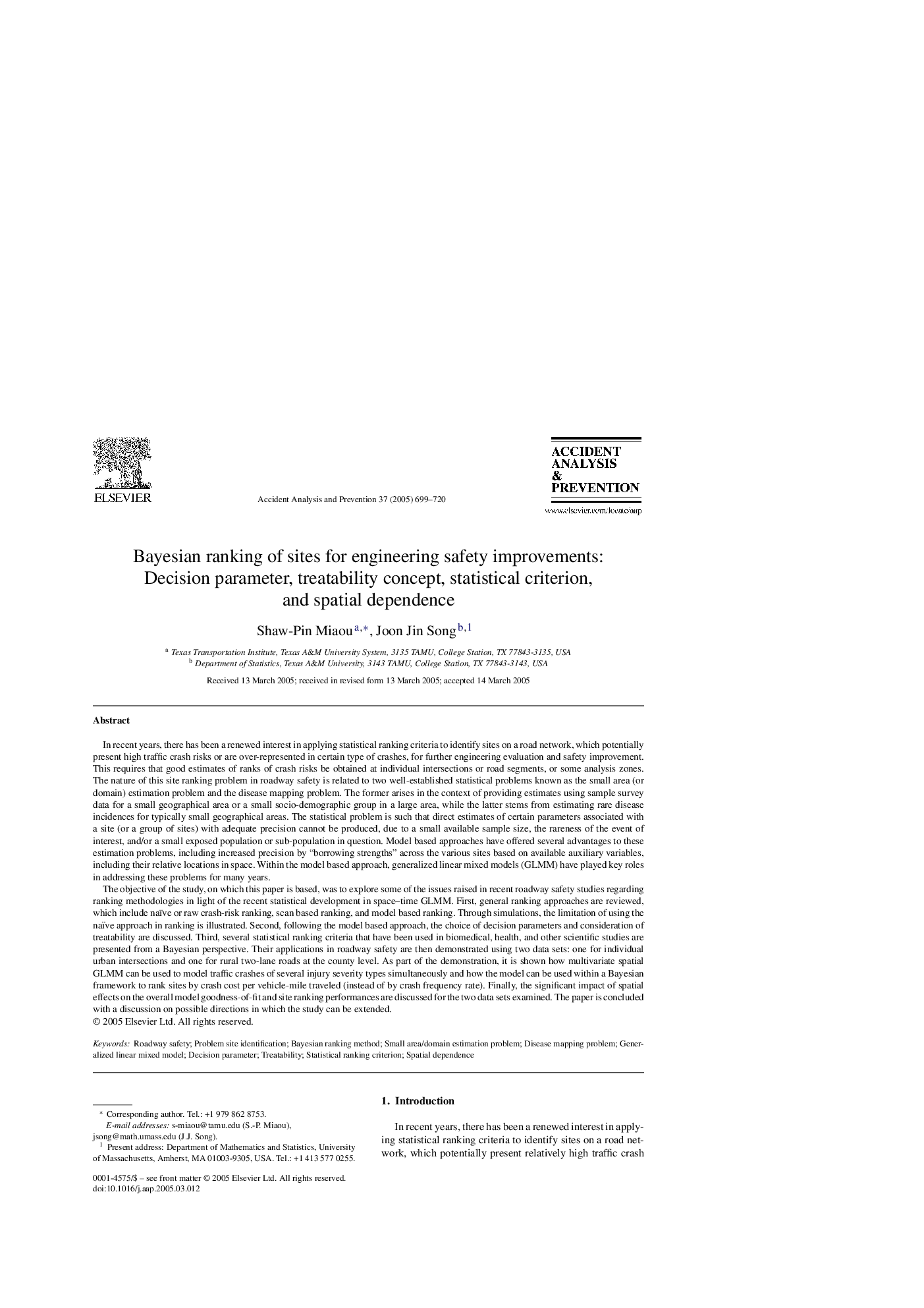| Article ID | Journal | Published Year | Pages | File Type |
|---|---|---|---|---|
| 10371611 | Accident Analysis & Prevention | 2005 | 22 Pages |
Abstract
The objective of the study, on which this paper is based, was to explore some of the issues raised in recent roadway safety studies regarding ranking methodologies in light of the recent statistical development in space-time GLMM. First, general ranking approaches are reviewed, which include naïve or raw crash-risk ranking, scan based ranking, and model based ranking. Through simulations, the limitation of using the naïve approach in ranking is illustrated. Second, following the model based approach, the choice of decision parameters and consideration of treatability are discussed. Third, several statistical ranking criteria that have been used in biomedical, health, and other scientific studies are presented from a Bayesian perspective. Their applications in roadway safety are then demonstrated using two data sets: one for individual urban intersections and one for rural two-lane roads at the county level. As part of the demonstration, it is shown how multivariate spatial GLMM can be used to model traffic crashes of several injury severity types simultaneously and how the model can be used within a Bayesian framework to rank sites by crash cost per vehicle-mile traveled (instead of by crash frequency rate). Finally, the significant impact of spatial effects on the overall model goodness-of-fit and site ranking performances are discussed for the two data sets examined. The paper is concluded with a discussion on possible directions in which the study can be extended.
Related Topics
Physical Sciences and Engineering
Chemical Engineering
Chemical Health and Safety
Authors
Shaw-Pin Miaou, Joon Jin Song,
